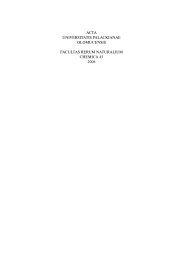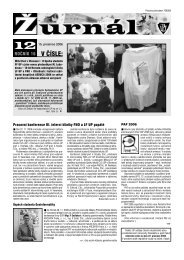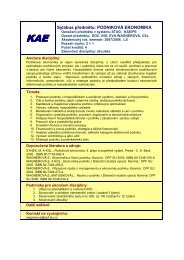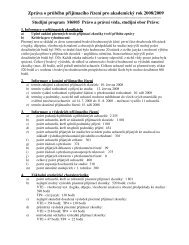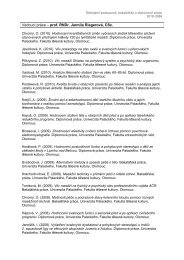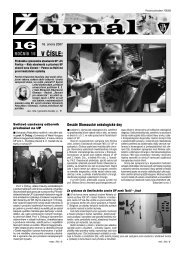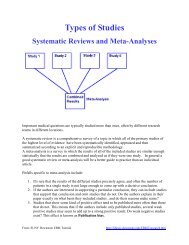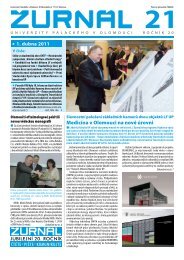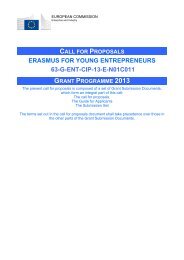ACTA UNIVERSITATIS PALACKIANAE OLOMUCENSIS GYMNICA ...
ACTA UNIVERSITATIS PALACKIANAE OLOMUCENSIS GYMNICA ...
ACTA UNIVERSITATIS PALACKIANAE OLOMUCENSIS GYMNICA ...
- No tags were found...
You also want an ePaper? Increase the reach of your titles
YUMPU automatically turns print PDFs into web optimized ePapers that Google loves.
Acta Univ. Palacki. Olomuc., Gymn. 2004, vol. 34, no. 2 37EVALUATION OF MUSCLE FUNCTIONS IN ATHLETESPERFORMING CLIMBING AND JUDOJarmila Riegerová, Zbyněk Jančík, Petr KytkaFaculty of Physical Culture, Palacký University, Olomouc, Czech RepublicSubmitted in September, 2003In two groups of athletes performing climbing and judo, belonging to the Juvenis, Adultus and Maturus 1 age groups,we conducted an analysis of muscle function and motor stereotypes. On average, the climbers had achieved the VIIthlevel of difficulty (a good climbing level), the judoists had been doing judo at the 2 nd league level. The low, almost zero,finding of shortening and substitutions in climbers gave us the idea of the evocation of an evolutionarily old, earlycoded model of reflexive motorics during climbing. With the group of judoists, tendency was seen which is knowneven in other sports, confirming the insufficient compensation of both the unilateral training load and lifestyle.Keywords: Muscle functions, motor stereotypes, free climbing, judo.INTRODUCTIONIn 2002 we conducted examinations for muscle functionsand motor stereotypes on two groups of athleteswho did climbing and judo. Members of both groupscame from the Moravian region. The group of climberscomprised 36 men ranging in age between 20 and 25(Adultus) and 3 men between the ages of 35–38 years(Maturus I).TABLE 1 shows the performance scale of theclimbers. It is scaled according to the level of difficultyof individual climbing paths – from the easiest (I) tothe most diffi cult path (XI). The highlighted sectionindicates the interval between individual levels reachedby the athletes. Level VII, the average level of difficultyachieved, represents a group of athletes at a good climbinglevel. The average performance of older men wasbetween levels IX–X+.RESULTSThe examination of muscle functions and motorstereotypes was conducted in accordance with themethod of Janda 1996, with alternative adjustmentof evaluation (Riegerová, 1993). The highly differingexamination results of the groups led us to undertake ananalytical study on the causes of this situation.TABLE 1Performance Scale of ClimbersI II III IV –V V V+ VI– VI VI+ VII– VII VII+VIII– VIII VIII+IX– IX IX+ X– X X+ XI– XIThe group of judoists comprised 30 men ranging in agebetween 15–29 years (Juvenis and Adultus). Their judoskills were on the 2 nd league level.Firstly, the group of climbers: Prior to each trainingsession, it is essential that each climber performs warmup exercises; e.g. Tefelner (1999) which presents sometechniques on thorough muscle stretching around the



